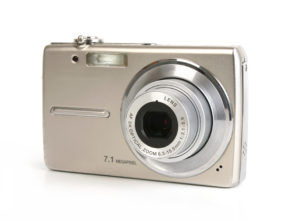Read the Following Selection
Read the following selection, or click on the play button below to listen aloud.
Camera Language

Creating a video is very easy today. You can shoot videos with video recorders, most digital cameras, and even smartphones. You can edit videos using programs on the Internet. And you can show your videos on your television or your computer.
If you want to make a good video, you will need to think creatively, and you will need to follow some basic steps. One of these steps is the making of a storyboard. Once you have the idea for your video and have written a script, it is time to make a storyboard. A storyboard is like a cartoon strip of what the video will show from beginning to end. Each frame, or box, shows a shot you want to take. In the frame, there is a rough drawing or sketch of the shot. What is happening in the shot is usually described in words. Sometimes what a character will say is included too. How the shot will be filmed is also explained. This is where you need to know camera language.
Here are some words that videographers and moviemakers use to describe shots. The same vocabulary is used whether you are making a three-hour movie or a video of your dog doing tricks. Some of these shots are effects created when editing.
• Close-up Shot: This means just what it says. It is a shot that is close to the subject of the shot. It is used to show details of the setting and emotions of the subject. A long shot means what it says too. It is a shot taken from a distance. It gives a wider view of the subject and shows more of the setting. A medium shot is a shot that would show a person from the waist up when they are sitting or standing.

• High Camera Shot: This is a shot that is taken from above the subject. It is sometimes used to make the subject appear weak by making it look small. A level camera shot is taken even with the subject. This is a very common shot. A low camera shot is taken looking up at the subject. Because this shot makes the subject look big, it can make the subject appear powerful.
• Pan: In this shot, the camera moves slowly across a scene in a sweeping movement. It is used to show the setting in more detail than a long shot.
• Zoom In: The shot starts away from the subject, then slowly moves closer. It is a way to focus the viewers’ attention on what will be happening. Zoom out is the opposite—the camera moves out slowly from the subject.
• Fade-out: In a fade-out, the shot slowly fades to black. This is often used at the end of a film. A fade-in is the opposite—a shot slowly appears from a black screen. This is often used at the beginning of a film. In a dissolve, one shot fades out while another shot is fading in.
Now, show what you know!
Complete some questions about the reading selection by clicking “Begin Questions” below.









